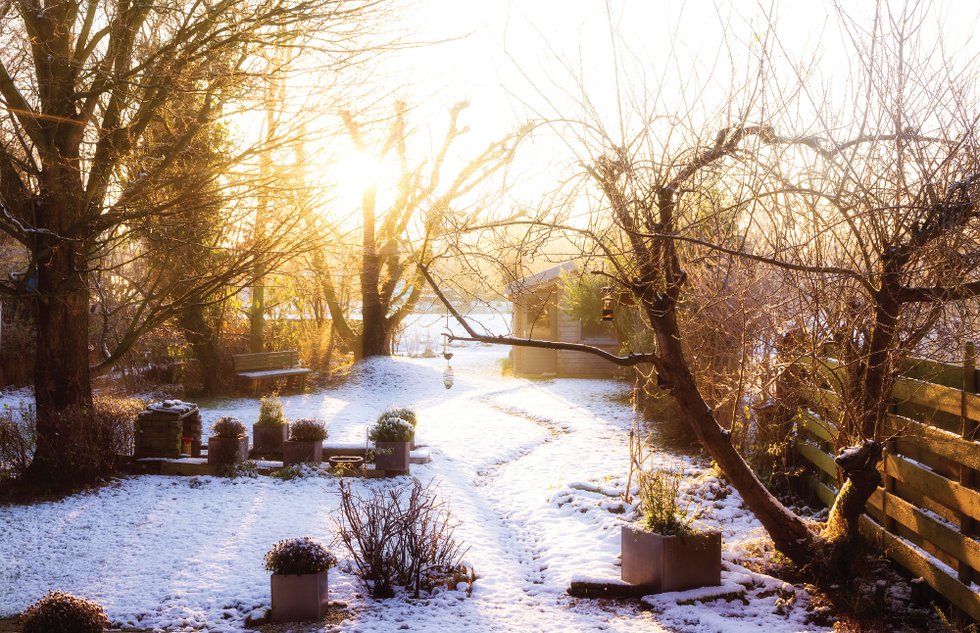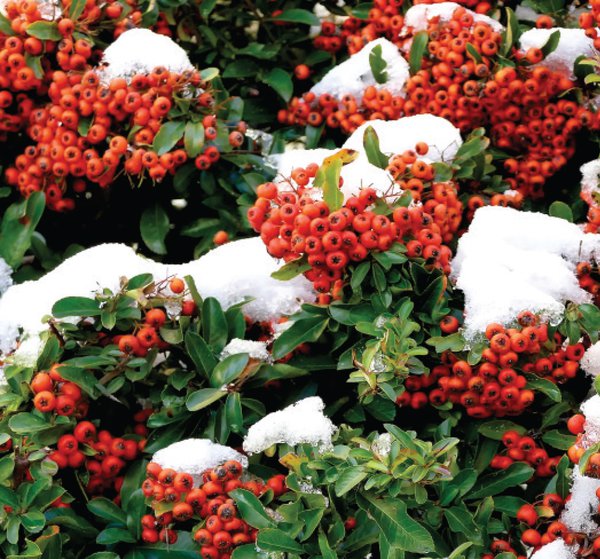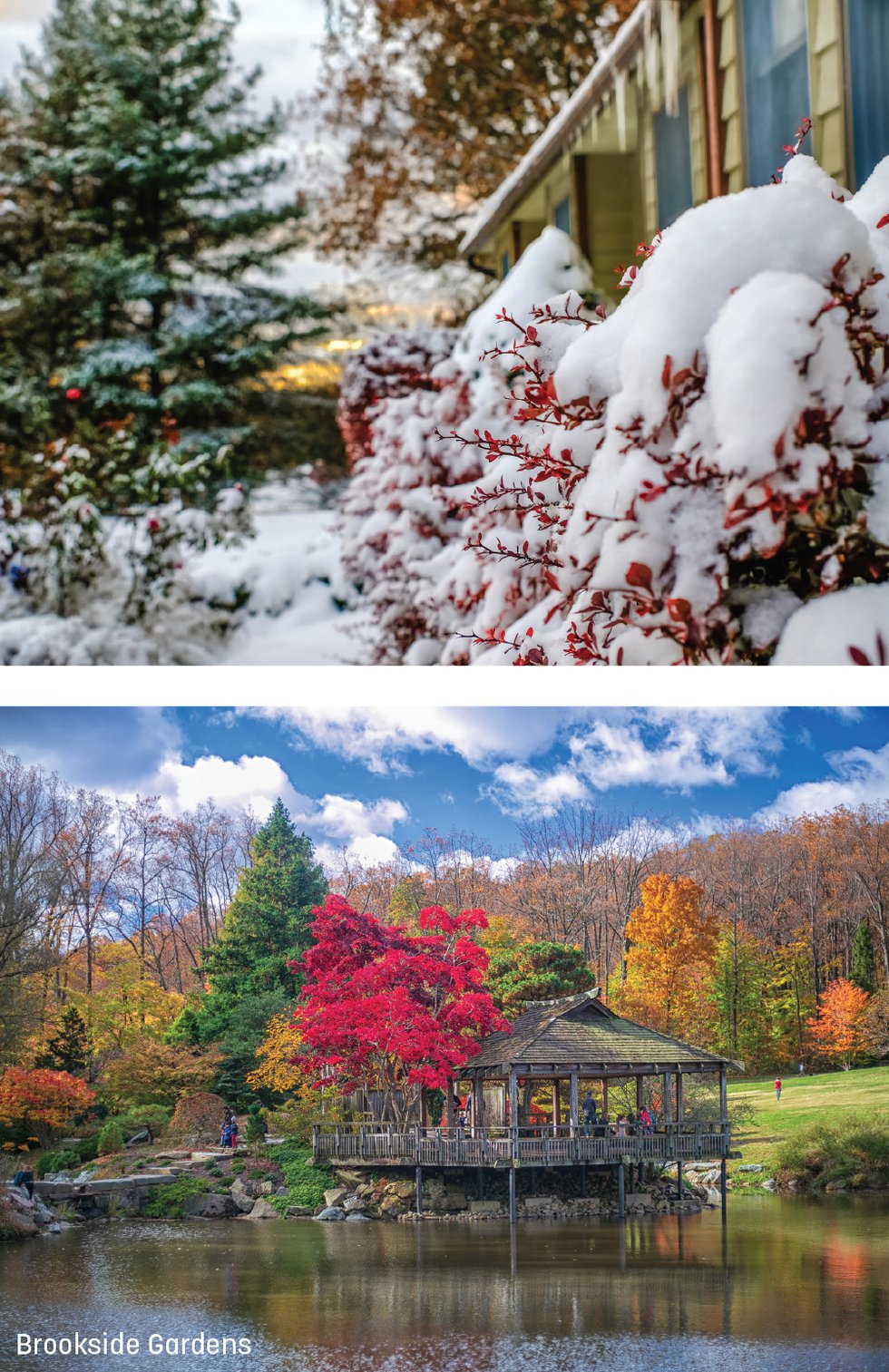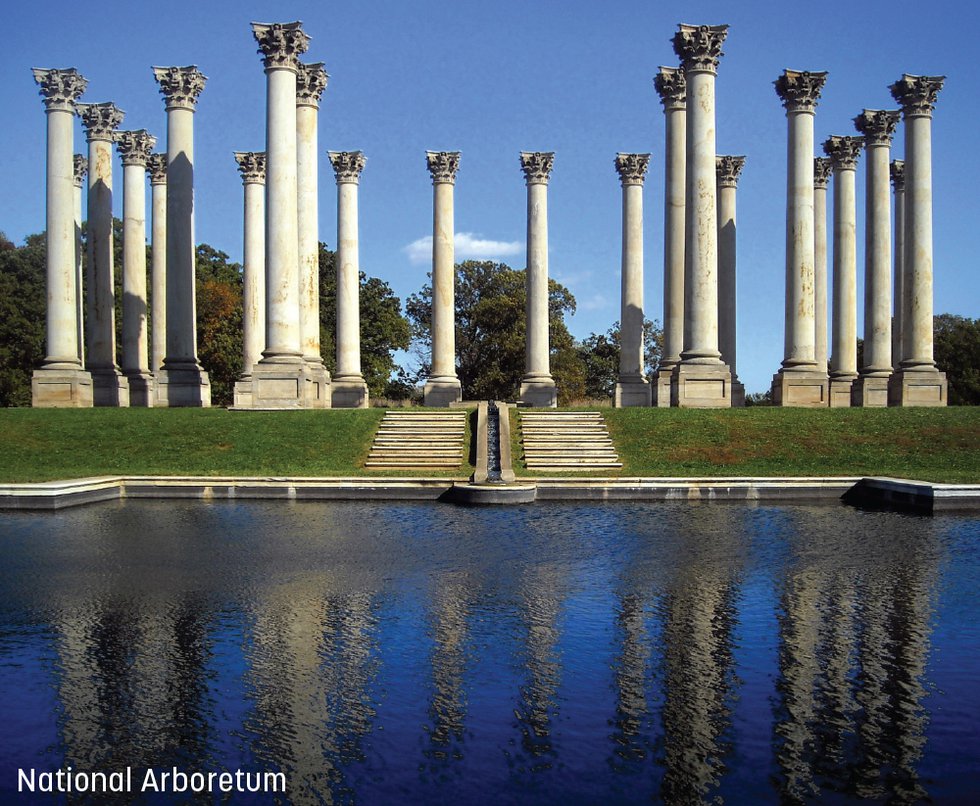Beautiful Bare Bones:
Reconsidering Our Gardens in Winter
DEC. 06, 2023


The holidays are upon us, and you’re probably leafing through these pages while waiting to pickup a child at a music lesson or for your turn at the dentist. So, I will be direct: Don’t overlook, during this busy season, the gifts to be enjoyed in the garden—yours and the gardens of others. Let me suggest a relaxation technique that’s foolproof: Consider spending a little time (a) admiring and evaluating your own garden in winter, then (b) visit a public garden or two for ideas and inspiration—a winter garden walk can be a lovely experience to share with friends and family.
When the leaves and flowers are gone, the garden stands in her starkest beauty. Take a bit of time to admire the architecture of your own garden, no matter the size. Consider:
The skyline is a good place to start. Is there variety in height?
The smallest garden can create a pretty tableau against the sky at dawn or dusk. Perhaps you’ll want to add a tall, feathery grass to break up the line, or do you need to trim down some shrubs to open a vista.
If you have a spacious garden, do taller and smaller trees and shrubs create a crenelated view?
Then there is depth. As you look out across your garden, does it appear, in the words of Robert Frost, “dark and deep?”
In small gardens, a wandering path can suggest depth, and a carefully placed garden sculpture draws the eye to what appears deeper in the garden.
Larger gardens more easily exhibit depth, however continuity of depth can be a challenge. Without rivers of blossoms to draw the eye, does the garden hold together moving back and away? Here too, a reconfiguring of your garden’s paths and the addition of a few visual points of interest can lead the eye into more distant areas in the garden.

Winter’s austerity allows texture to take center stage. The eye will note with interest variety in the textures of bark, branch, and berries.
Bark: Copper, Paper, and River Birches, Sweetgum, Coral Bark Japanese Maple, Cherry Tree all offer beautiful textures.
Branch: Red Twig Dogwood, Corkscrew and Witch Hazel, Oakleaf Hydrangea, False Cypress, and Smokebush provide color all year, particularly welcome among the grays and browns of winter.
Berries: Holly bushes and trees, Winterberry, Firethorn, Beauty Berry, and Chokeberry are popular with the birds and other wildlife that shelter in your neighborhood over the winter.
Finally, consider whether there are “holes” in your garden, areas where nothing is delighting the eye or striking the imagination.
Which brings us to my second suggestion: Take an hour or perhaps longer and visit a local public garden. Once you’ve evaluated your own garden, you have some questions and ideas that may be answered or enhanced by other gardening professionals. (No need to reinvent the wheel or settle for less than charming ideas.)

Here are some public gardens in Maryland that will probably be open when you wish to visit but be sure by checking their web sites. Plan to take some photos while you’re wandering through the garden. You may also want to take a note pad; you may run into one of the professional gardeners. Ask them any questions you have about your own garden. They’re usually delighted to “talk shop” with a fellow gardener.
- Adkins Arboretum, Ridgely, Caroline County: adkinsarboretum.org
- Brookside Gardens, Wheaton, Montgomery County: montgomeryparks.org/parks-and-trails/brookside-gardens
- Ladew Topiary Gardens, Monkton, Harford County: ladewgardens.com
- London Town & Gardens, Edgewater, Anne Arundel County: historiclondontown.org
- McCrillis Gardens, Bethesda, Montgomery County: montgomeryparks.org/parks-and-trails/mccrillis-house-gardens
- Paca Gardens, Annapolis, Anne Arundel County: annapolis.org/contact/william-paca-house
- Rawlings Conservatory & Botanical Gardens, Druid Hill Park, Baltimore City: rawlingsconservatory.org
- Sherwood Gardens, Baltimore City: sherwoodgardens.org
And, we must not forget the spectacular treasures we have within easy driving distance, the National Arboretum (usna.usda.gov) and the National Botanical Gardens (usbg.gov). Both are right down Route 50, and both are free to the public. If you haven’t visited them in a while, please do.
The Botanical Gardens have a spectacular display of seasonal plants and a huge room with toy trains running among villages, woods, mountains, and rivers all constructed from natural fibers—bark, branches, leaves, heart wood, and more. Open through January 2nd.
Just a little tidbit I ran across in my research: If you’re off to Britain any time soon, the largest and oldest public winter garden is in Regent’s Park, London (royalparks.org.uk/visit/parks/regents-park-primrose-hill). Constructed in 1842–1846, the winter garden is, as you might expect, spectacular—fit for a king or queen!
